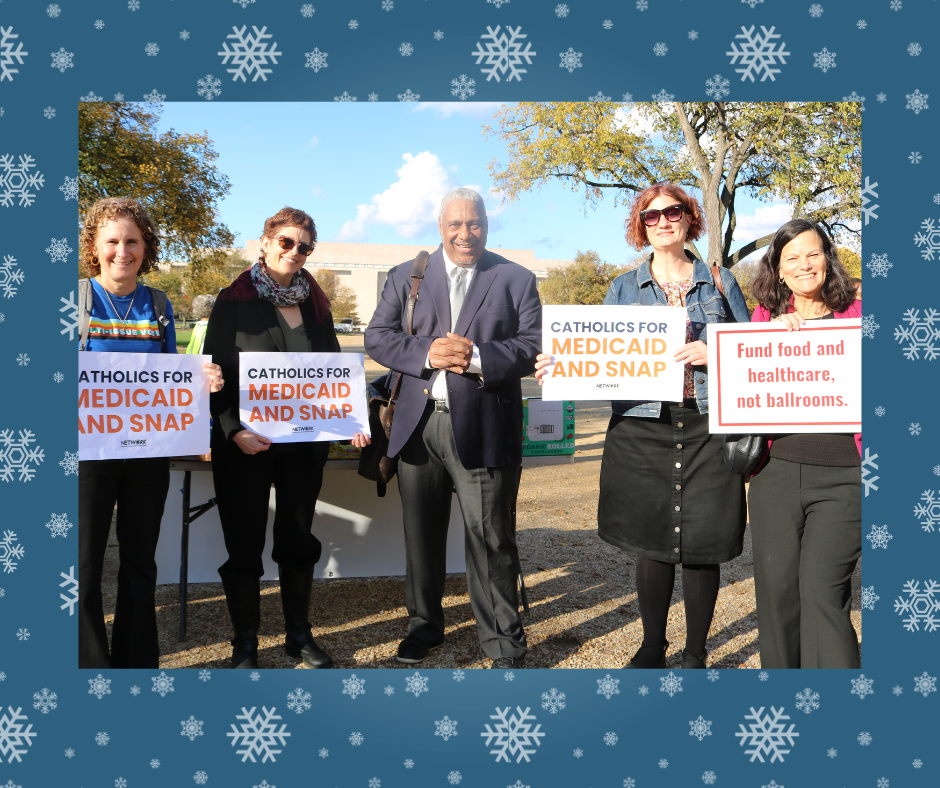
Political Firestorm about CBO Report
By Carolyn Burstein, NETWORK Communications Fellow
February 06, 2014
Those who oppose the Affordable Care Act may continue to misrepresent this week’s CBO report’s findings so it is important to let people know the truth. The report is clear about individuals being freed up to leave the workforce, look for other work, or start a business while not worrying about healthcare coverage. Many of these choices may be related to qualifying for health insurance subsidies. But employers pass on the costs of doing business – e.g. payroll taxes – to employees all the time. Why should employees not make enlightened decisions? And the increased demand for labor will reduce unemployment and raise wages.
Here are the facts:
The findings in the economic report released on February 4, 2014 by the nonpartisan Congressional Budget Office (CBO) that the Affordable Care Act (ACA) will shrink the workforce by more than 2 million full-time positions by 2021 touched off another round of political warfare over the ACA. Top Republicans pointed to the CBO analysis as further evidence the health care law was a “job killer.” As Chairman of the House Committee on the Budget, Paul Ryan said, “…Obamacare is only making things worse…CBO says the law will push 2.3 million people out of the workforce and will insure far fewer people than previously expected.”
However, the CBO’s projections are much more complicated than the criticism leveled by GOP lawmakers. In addition, the report is filled with caveats that critics are quick to overlook, such as on page 118 (such remarks are widespread and on nearly every page): “CBO’s estimate of the ACA’s impact on labor markets is subject to substantial uncertainty…” The estimated reduction of workers stems almost entirely from a net decline in the amount of labor that workers choose to supply, rather than from a net drop in businesses’ demand for labor.
The report was clear that the reduction in employment would occur not because of a crippling impact on private-sector job creation. Rather, some workers may choose to work fewer hours to qualify for health insurance subsidies, but at the same time some people may choose to work more hours as a result of the ACA’s provisions. For example, in the 25 states and the District of Columbia that have chosen to expand Medicaid, people qualify for Medicaid who make up to 138% of the federal poverty level (FPL), whereas prior to 2014, the median income threshold for Medicaid eligibility was 64% of the FPL (albeit with substantial state-to-state variation). Many people may choose to increase their hours of work while remaining eligible for subsidized insurance.
Much of the media initially – and incorrectly – reported the 2.3 million figure as “job losses.” That figure would not take a toll on the unemployment rate, since those working less would generally be doing so voluntarily. Even Paul Ryan, during the February 4 hearing on the report asked CBO Director Elmendorf: “Just to understand, it is not that employers are laying people off?” Elmendorf responded: “That is right.” The key here is that people will have more choices when it comes to employment and how much they’ll work, not on businesses cutting back on jobs. White House Press Secretary Jay Carney emphasized that “individuals will be empowered to make choices about their own lives and livelihoods, like retiring on time rather than working into their elderly years or choosing to spend more time with their families.”
The report itself states that there is “no compelling evidence that part-time employment has increased as a result of the ACA.” This responds to one of the most common warnings from small business lobbyists concerning the ACA. Nor does the report take into account the potential impact that ACA’s slowing of health care costs will have on the economy, which some experts have estimated could add between 250,000 and 400,000 jobs to the economy by the end of the decade. Representative Chris Van Hollen (D-MD) also noted that the CBO report projects the health care law will boost demand for goods and services over the next few years, increasing the demand for labor (or reducing unemployment, as Elmendorf verified in the February 4th House hearing on the CBO report).
The Progress Report (February 5, 2014) from the Center for American Progress gives three important reasons why the CBO report is positive news for the ACA:
- Individuals are no longer trapped in their jobs because of health coverage. They have the same options as people with higher incomes have always had.
- The unemployment rate will actually decrease. The ACA will boost overall demand for goods and services because the people who benefit from the expansion of Medicaid and from access to the exchange subsidies are predominantly in lower-income households and thus are likely to spend a considerable fraction of their additional resources on goods and services. This increase has a multiplier effect and will lead to greater employment.
- Wages will increase. If the 2.3 million person reduction in the workforce by 2021 due to people choosing either not to work or to reduce their hours becomes a reality, then wages will be raised because of an increased demand for labor.
cursus.







